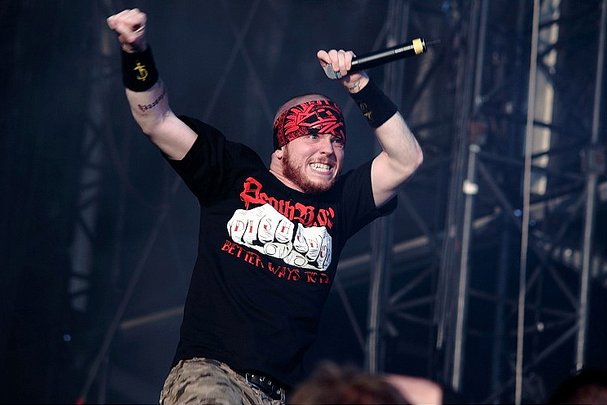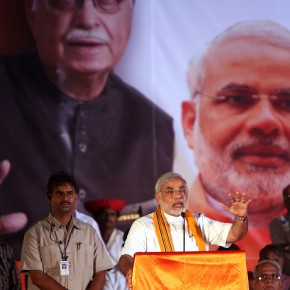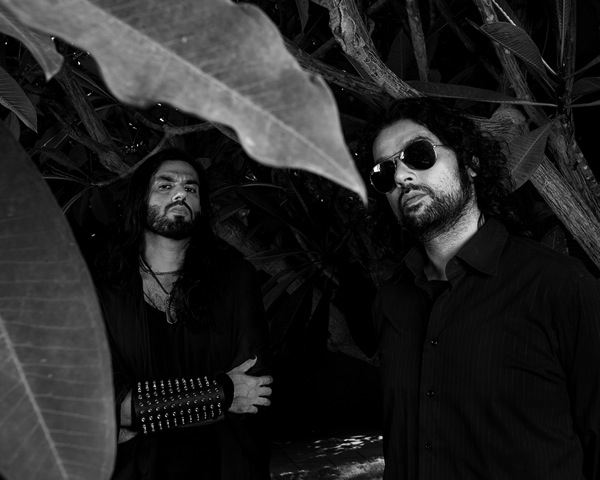Crisis-period metal is metal at its most innovative. Artists are taking the genre in many different directions, some of which, as in post-metal, are challenging the very nature of what metal is and could be. But what I’m imagining is something more thoroughgoing and systematic. Innovation on its own is not enough to keep metal alive. One possible future scenario is that metal, in innovating forward, may dissipate itself so that the core musical constituents of metal simply become part of the wider musical toolbox. Innovation has to stay within a metal framework if it is to invigorate metal itself.
One of the astonishing aspects of metal is how over its 40+ years of history it has managed to diversify, despite having at its core a highly circumscribed set of elements. Whatever metal is, it almost always utilises distorted guitars that draw on a quite limited selection of riffs – this is metal’s inner ‘core’. To be sure, lite metal at one end, and grindcore at the other, differ substantially in song structure, instrumentation, timbre, vocals, tempo, lyrics and other aspects. Yet the repetition of distorted guitar riffs mobilising augmented fourths, and a limited set of other intervals, is common to both.
Innovation in metal has included and excluded a huge range of musical elements outside this riff-based format. It has also explored many different ways of structuring, voicing and mobilising these riffs. What is much rarer is questioning and transforming the core itself. The tacit assumption seems to be that metal cannot be metal without this core.
But is this necessarily true? In his book Infinite Music, critic Adam Harper argued that if we systematically account for the range of potential musical variables, we can open up near-limitless musical possibilities. In Harper’s terms, only a very limited area of ‘musical space’ has actually been “colonised.” It would therefore be a fascinating exercise if metal artists were to start exploring what metal might look like if it admitted a wider or a different set of musical variables into its core.
How might this be done? The challenge is for metal artists to become aware that there are more sonic possibilities available than they might assume. Metal scenes value knowledge of metal above all. Perhaps we need a creative exercise in unlearning, in which prestige and status are accorded less to those with extensive knowledge of metal’s past and more to those who fearlessly explore the future. Or to put it another way, metal’s transgression power needs to be focused inwards towards metal itself.
What would metal sound like if metal had never existed? What if metal’s genre rules were not developed in the late 1960s but in the early 2010s? The musician, producer and theorist Brian Eno has long been fascinated with these kinds of imaginative exercises. In an 2010 interview, he outlined his approach, looking back on how he developed ambient music in the 1970s:
“A way to make new music is to imagine looking back at the past from a future and imagine music that could have existed but didn’t. Like East African free jazz, which as far as I know does not exist. To some extent, this was how ambient music emerged. My interest in making music has been to create something that does not exist that I would like to listen to, not because I wanted a job as a musician. I wanted to hear music that had not yet happened, by putting together things that suggested a new thing which did not yet exist. It’s like having a ready-made formula if you are able to read it. One of the innovations of ambient music was leaving out the idea that there should be melody or words or a beat… so in a way that was music designed by leaving things out – that can be a form of innovation, knowing what to leave out. All the signs were in the air all around with ambient music in the mid-1970s, and other people were doing a similar thing. I just gave it a name. Which is exactly what it needed. A name. Giving something a name can be just the same as inventing it. By naming something you create a difference. You say that this is now real. Names are very important.”

In his work as a producer, Eno has constantly challenged artists to rethink the basic assumptions behind what they do through the use of gnomic challenges and games in the studio. Playful exercises have been one way that other contemporary art forms have probed the boundaries of possibility through freeing art from some constraints and developing new ones. The French literary movement Oulipo, has explored different forms of constraint in writing, for example through Georges Perec’s attempt to write his novel Disparition without using the letter e. In music, John Cage explored using chance and mathematical formulae to govern new ways of making music.

Such challenges, games and rules do not need to be set in play by musicians. They can be thought up by anyone. It is here that critics can perform a central role. As a starting point, I offer the following challenge to any musician who might be interested: try making music that was not based on repeated sequences of distorted guitar riffs, but still sounded ‘metal’.
The question is how to nurture receptiveness among musicians and fans for such challenges and games. This is part of a broader question: how to nurture receptiveness among musicians and fans for new kinds of experimentation in metal, which might confront the very constraints that define metal.
Perhaps a modest starting point would be to highlight those current existing innovations that seem to open up new possibilities, treating them not as marginal experiments, but as intrinsic parts of metal itself. Here are three brief examples:
- Chord: an American ‘drone collective’ that produces works based on only one chord, voiced and played in many different ways, with each member of the collective playing a single note of the chord.
Chord’s significance is that, while they uphold the centrality of distorted guitars in metal, they reject the chord progressions that constitute the riff. Although Chord do produce one-note riffs using a diversity of rhythmic patterns, the deliberate abandonment of chord progression is new to metal. Although funeral doom and drone metal bands often use long pauses between chords, the knowledge that the progression will be made does effect the listening experience. In contrast, Chord forces listeners to concentrate on the often minutely differentiated possibilities inherent in the chord itself.
- Author and Punisher: An American solo artist who makes industrial metal using entirely home-made instruments.
The sounds that constitute Author and Punisher’s music are generated by computer, but controlled using home-made instruments unlike those commonly used in metal. The use of samples and computer-generated sounds in industrial metal is not new (Young Gods, for example, have a long history of doing so.) However, they tend to be controlled through keyboards, laptops and guitars. Author and Punisher’s instruments, played through pushing and pulling motions, and even through blowing, interact with the body in ways that are uncommon in music-making. So commonplace and unquestioned is metal’s instrumentation that its reliance on a limited set of body movements goes unnoticed. Author and Punisher open up new ways of imagining how bodies can create metal.
- Ethnamorte: A London-based group who draw on an extensive set of Spanish, Middle Eastern and other ‘world music’ influences that echo, but do not incorporate, metal riffs and styles .
While the incorporation of folk and world music styles into metal is now common, Ethnamorte’s music sounds eerily similar to metal without any of the trappings of what we think of as metal (including distorted guitars.) The band bring out the similarities between metal’s use of modes such as the locrian, and their use in other non-western musical styles. Ethnamorte are not metal, but they run in parallel to metal, never quite being absorbed into it.
The challenge the band presents to metal is to recognise that some aspects of metal aesthetics can also be pursued in other genres. If metal can locate itself outside of its own aesthetic boundaries, there’s no reason it shouldn’t try to transgress them more often, either. Tradition, after all, is beholden to innovation. If it doesn’t try and reinvent itself, it dies. I can’t think of a better thing to do during a time of crisis.
Part six in a series. Photographs courtesy of Olivier Bourgi, Eddie Codel, and Neurot Recordings. Published under a Creative Commons license.





